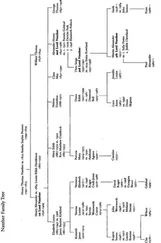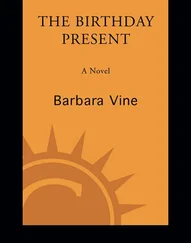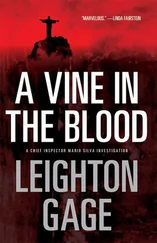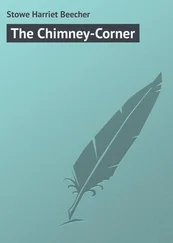Barbara Vine - The Chimney Sweeper's Boy
Здесь есть возможность читать онлайн «Barbara Vine - The Chimney Sweeper's Boy» весь текст электронной книги совершенно бесплатно (целиком полную версию без сокращений). В некоторых случаях можно слушать аудио, скачать через торрент в формате fb2 и присутствует краткое содержание. Год выпуска: 2012, ISBN: 2012, Издательство: Crown Publishing Group, Жанр: Современная проза, на английском языке. Описание произведения, (предисловие) а так же отзывы посетителей доступны на портале библиотеки ЛибКат.
- Название:The Chimney Sweeper's Boy
- Автор:
- Издательство:Crown Publishing Group
- Жанр:
- Год:2012
- ISBN:978-0-307-80115-9
- Рейтинг книги:5 / 5. Голосов: 1
-
Избранное:Добавить в избранное
- Отзывы:
-
Ваша оценка:
- 100
- 1
- 2
- 3
- 4
- 5
The Chimney Sweeper's Boy: краткое содержание, описание и аннотация
Предлагаем к чтению аннотацию, описание, краткое содержание или предисловие (зависит от того, что написал сам автор книги «The Chimney Sweeper's Boy»). Если вы не нашли необходимую информацию о книге — напишите в комментариях, мы постараемся отыскать её.
The Chimney Sweeper's Boy — читать онлайн бесплатно полную книгу (весь текст) целиком
Ниже представлен текст книги, разбитый по страницам. Система сохранения места последней прочитанной страницы, позволяет с удобством читать онлайн бесплатно книгу «The Chimney Sweeper's Boy», без необходимости каждый раз заново искать на чём Вы остановились. Поставьте закладку, и сможете в любой момент перейти на страницу, на которой закончили чтение.
Интервал:
Закладка:
The next weekend, he was due in Barnstaple and she would go down to Lundy View House. Anticipation ran through her body like a hot gush of steam. She was shut off from the outside world, enclosed in a strong, trembling excitement, so that she walked past Mellie Pearson’s door and had to retrace her steps.
It took her a little while to bring herself out of the fantasy she had entered from the moment she had seen him. It took some deep breathing and hand clenching while she stood on the doorstep. And Mellie Pearson had opened the door before she could ring the bell.
“Couldn’t you make the bell work? It doesn’t always. I was waiting for you, anyway.”
Sarah, restored quite quickly to reality, found herself looking at the original painting, not for the Hamadryad jacket, but for that of A White Webfoot. It had been placed on an easel, a watercolor of a blue, white, gray-purple landscape, the trees gray shadows in the mist, only the wading waterbirds clearly outlined.
“I did designs for four of your father’s books,” Mellie Pearson said. “He bought all the originals except that one. I don’t know why, but he never much liked that one.”
Sarah said, “You said you copied the moth. I don’t know much about these things. Were you given a print of it to get into your drawing, or did you sort of stick it on later?”
Mellie Pearson laughed. “That’s about it. I saw a print of it so that I could avoid its somehow clashing with my design. Do you see what I mean? If I’d done a very dark painting for Hamadryad , for instance, the moth wouldn’t have shown up.”
“What is it called?”
“The moth? I don’t remember. I was given a photocopy of a print from an old book, The Moths of the British Isles , something like that.”
“But you don’t remember the moth’s name?”
“It was eighteen years ago,” said Mellie Pearson. “I do remember one of the moths was called Tanagra, because of Tanagra figurines. That’s why I remember. You know, the terra-cotta figures discovered at Tanagra, in Greece. But it may not have been the one I drew for your father’s book. Still, it doesn’t matter. My not remembering, I mean. I’ve got all my notes and sketches for Hamadryad. ”
“You’ve still got them?”
“I may not look it, but I’m really quite a methodical woman.”
Photographs and sketches of waterbirds, avocets and whimbrels, goosanders and widgeons. For a moment, Sarah thought she had been given the wrong folder, and then she remembered the faint shapes of shadowy birds in the jacket painting for A White Webfoot , spindly-legged, gray-plumed. Next, she came upon a preliminary sketch for the jacket. No birds here, only marsh and mist, a blurred horizon.
Sarah thought back, seemed to remember her father rejecting an early design for this jacket as too misty, too vague. And the next attempt had also displeased him. Here it was, duck feet, goose feet, webbed and spread, making a pattern like fallen leaves on the pale opalescent background. Mellie Pearson’s third attempt, with the birds and clouds and limpid water, the mist half-lifted, had been the one chosen. And this time, the moth was there, sooty black against the pastel bluish gray and gold.
It would be used again and again, on every novel Gerald Candless had published since that time, this small emblem placed above Carlyon-Brent’s familiar logo of a winged foot.
Mellie Pearson had made notes for it in her artist’s fine Italian hand from, according to the attached labels, The Moths and Butterflies of Great Britain and Ireland by A. Maitland Emmet, The Moths of the British Isles by Richard South, and Butterflies and Moths of the Countryside by F. Edward Hulme. She had been thorough and painstaking and rather more in love with words than Sarah would have expected. Under the heading “Psychinae,” she had written, “Psyche, the soul, also a butterfly or moth from the analogy between metamorphosis and resurrection. The soul is the spirit of man liberated from the impurities of the flesh. Shrank says the name Psyche casta (chaste soul) may have been prompted by the fact that some members of this family refrain from sexual activity.”
There was evidently more to moths than met the eye. Sarah looked at the line drawings Mellie Pearson had made, exquisite, detailed, fine. Moths with patterned or striped wings and furry bearlike bodies, a coal black moth with splayed antennae, a tiny moth, fuscous, densely scaled. The artist had marked the bigger insect with a cross, the smaller with a question mark.
Sarah turned the page and came to a letter. It was a letter from her father, and the sight of the familiar handwriting in an unexpected place seemed to touch her heart and pluck at it. She had to look away and close her eyes. Then she braced herself and read it. The date was May 6, 1978.
Dear Miss Pearson ,
I believe you are expecting to hear from me about the moth. My publishers will have told you I want to use a moth emblem on my books. However, it cannot be just any moth, but must be one of a specific genus: Epichnopterigini.
I have never seen this creature in life, only in pictures. I expect the Natural History Museum would help you to find it. They have an Insect Identification Department, I am told. The moth’s name is Epichnopterix plumella. One more thing—if this does not sound too pedantic and absurd, please don’t confuse it with the larger Odezia atrata. This could easily happen, as you may find when you do your research.
I look forward to seeing your drawing.
Yours sincerely,
Gerald Candless
What on earth did he mean? What was this business about confusing one Latin name with another? It all sounded so unlike her father, who had had scant interest in natural history and in the garden at Lundy View House hadn’t been able to tell a fuchsia from a geranium. She said aloud, “Tell me the answer, Dad,” and then added, “Tell me who you were.”
A hint, not an answer, came from inside her own head. Atrata meant black, didn’t it? Post equitem atra curia sedet. She remembered that—everyone knew about black care sitting behind the horseman. Her father had thought one black moth might have been confused with another. A big one with a small one? Were those two in Mellie Pearson’s drawings Odezia atrata and Epichnopterix plumella ? But why did it matter? What could it matter? And why did he want the smaller moth when the larger would have been more impressive? The small one—in the drawing, at any rate—looked less densely black.
“Tell me why, Dad,” she said. “Tell me what all this is about.”
Mellie Pearson evidently wasn’t going to be able to do so. There were no more notes in the folder, only sketches. One of these, the final version of the black moth, had a piece of paper clipped to it on which she had written, “Approved by author.” That was all.
Sarah asked herself how it was that her father had known about these moths. Somewhere, he had come across them in that dark, lost time before he became Gerald Candless. Their names seemed to mean nothing in particular, though for a few minutes she tried vainly making anagrams from them. Of course, it was always possible that the moth had played some decisive role in his destiny or his work, or, like Jung’s golden scarab, had flown up against his window and distracted him from writing a letter that would have been fateful. Or, by burning its wings at his light, have shown him a course not to take.
In that case, she would never know. And perhaps it was unimportant. But she wasn’t convinced that was so. The identification of this small dark insect contained somehow the solution to his identity.
Читать дальшеИнтервал:
Закладка:
Похожие книги на «The Chimney Sweeper's Boy»
Представляем Вашему вниманию похожие книги на «The Chimney Sweeper's Boy» списком для выбора. Мы отобрали схожую по названию и смыслу литературу в надежде предоставить читателям больше вариантов отыскать новые, интересные, ещё непрочитанные произведения.
Обсуждение, отзывы о книге «The Chimney Sweeper's Boy» и просто собственные мнения читателей. Оставьте ваши комментарии, напишите, что Вы думаете о произведении, его смысле или главных героях. Укажите что конкретно понравилось, а что нет, и почему Вы так считаете.












